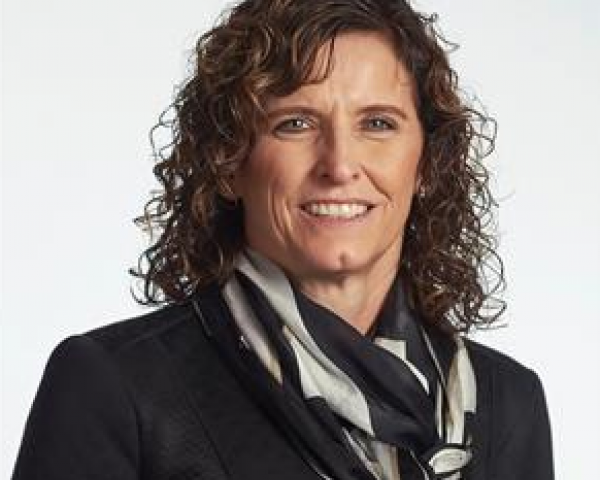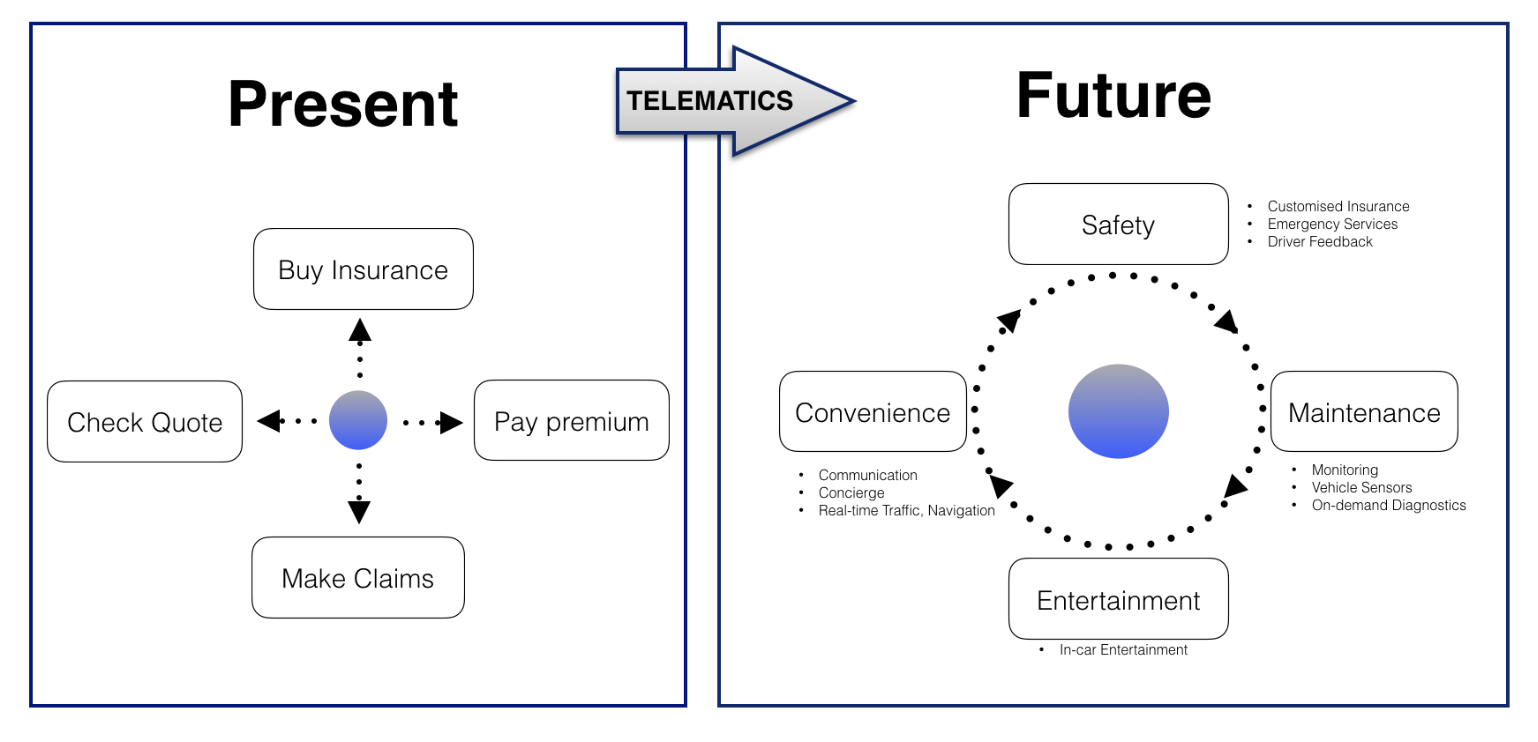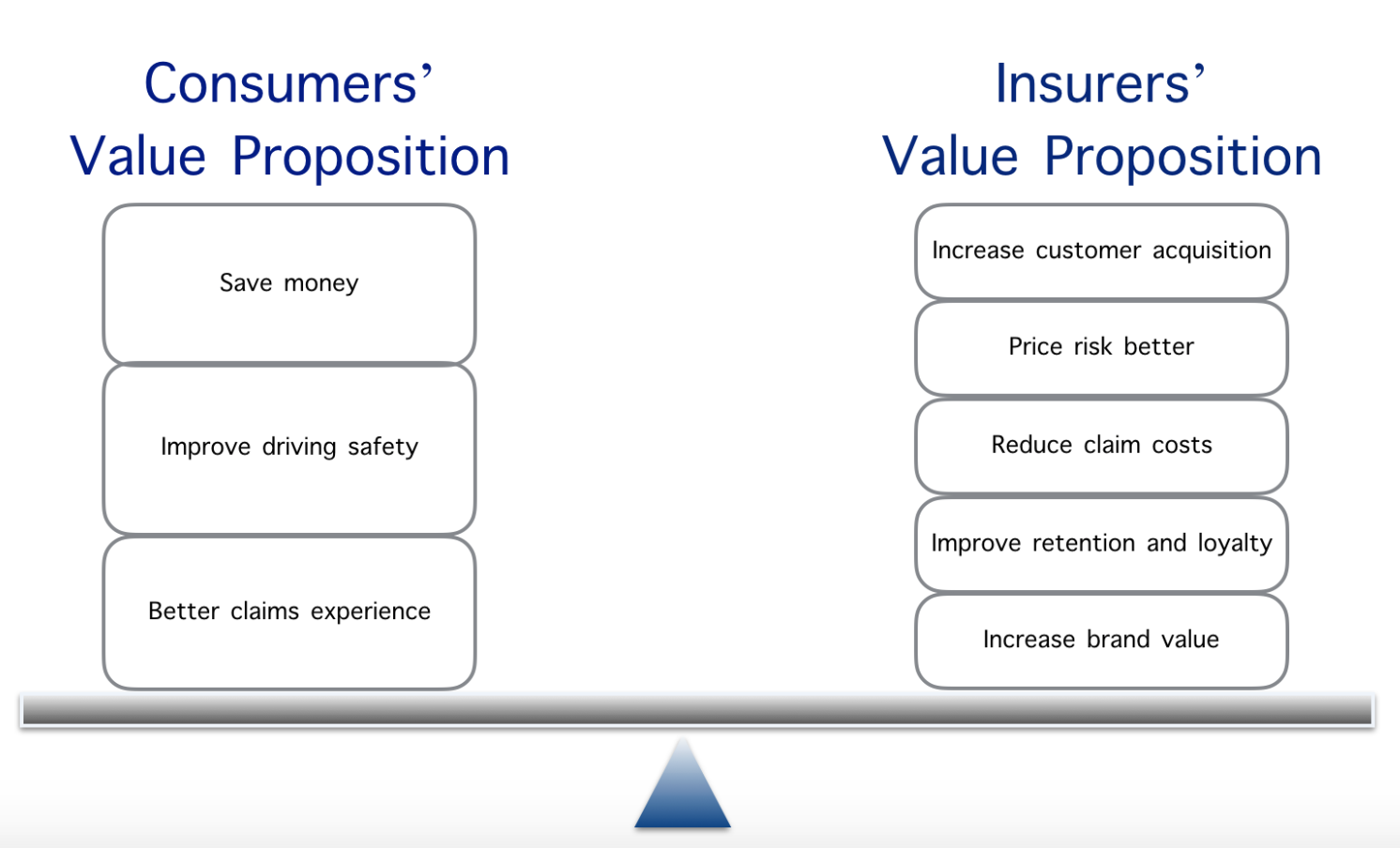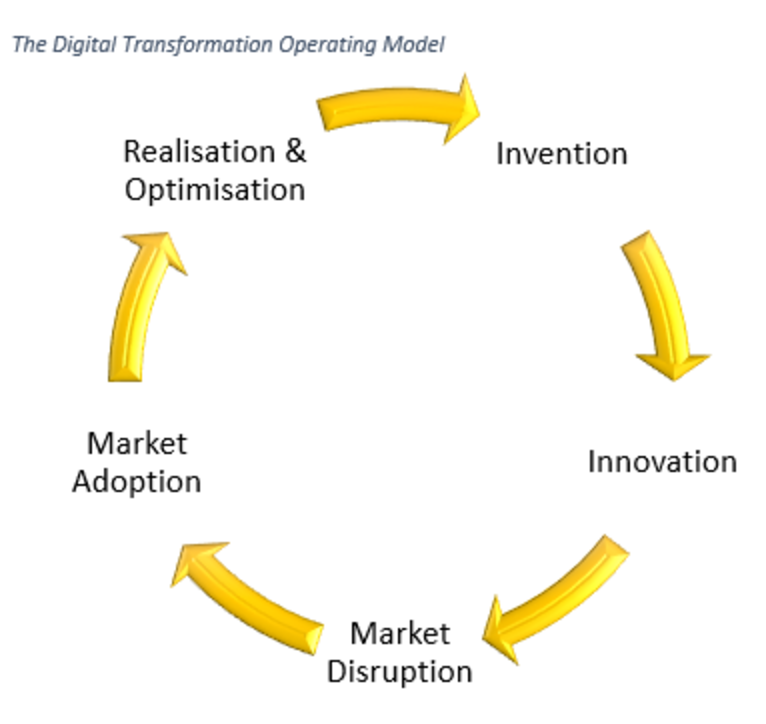Lessons on Disruption From the Food Industry
How can organizations minimize problems and maximize opportunities in disruptive times? The food and drink industry offers insights.

How can organizations minimize problems and maximize opportunities in disruptive times? The food and drink industry offers insights.

Get Involved
Our authors are what set Insurance Thought Leadership apart.
|
Partner with us
We’d love to talk to you about how we can improve your marketing ROI.
|

Tami Griffin has extensive experience in the food system and agricultural industry. She provides industry-specific experience with an emphasis on risk identification, assessment and developing solutions for non-traditional risks such as food contamination events, bioterrorism, brand damage, supply system disruption, sustainability, volumetric loss to crop/livestock, weather, climate change, commodity price and other high-impact financial volatility risk.

Twenty years ago, during the initial internet boom, innovators argued loudly that the game was all about disruption, that incremental improvement was for wimps. "Faster, better, cheaper" was for those not bright or bold enough to seize the future.
Over time, the idea that digital would completely replace commerce in the physical world moderated, and the hybrid notion of "clicks and mortar" emerged. People also realized that it wasn't just those who came up with breakthrough business models that merited attention. There was also a class of "arms merchants," including Sun Microsystems and Cisco, that made gobs of money by outfitting the pioneers—in fact, more than almost all the pioneers.
The analogy was: If you try to name a miner who won big in the Gold Rush of 1849, good luck. But you know many of the outfitters, including Levi Strauss, who supplied blue jeans to miners, and Leland Stanford, who made his fortune mostly on the railroad that connected the miners to the rest of the country, before founding his eponymous university.
In insurance, we seem to be revisiting the disruption vs. incrementalism debate, as Lemonade, Trov, Slice and some other truly new business models stretch our thinking and throw shade on those merely looking for "faster, better, cheaper."
Having watched the initial internet cycle at close range and having lived through some other innovation cycles, both before and since, I side in this debate with ... both groups.
The Lemonades of the world will be the most important and will transform insurance. In time. If they work. (Some will, but, if history is any guide, many others will fall by the wayside.)
In the meantime, there is an awful lot to be gained through incremental improvement. Insurance is such a paper-heavy, process-based, inefficient industry that the potential efficiencies from digital improvement exceed those in perhaps any other industry.
The two forms of innovation go hand in hand: Companies need to generate as many productivity gains as they can to finance efforts at disruptive innovation. As our chief innovation officer, Guy Fraker, will tell you: Every company needs a portfolio of innovation projects, ranging from the simple and short-term all the way out to "moon shots" that, while speculative, could change your whole company and maybe the industry. Managed as a whole, that portfolio only needs some seed money and then can be self-financing.
The pressure is certainly on. Marsh reports that global insurance prices have, on average, now declined for 17 consecutive quarters, and you certainly aren't going to make up the difference based on investment income these days. Meanwhile, many insurers say they worry that they could lose as a significant chunk of their revenue to startups—a call both to protect customers from competitors and to become wildly more productive.
As you search for those efficiencies, you need to track the "arms merchants" that could help you—perhaps through a subscription to our Innovator's Edge, which tracks nearly 2,000 insurtechs and a network of almost 60,000 related companies. You will find a host of companies that can help: Pypestream, which provides chatbots that slash costs in call centers; WeGoLook, which provides a network of more than 30,000 "Lookers" that can make the claims process more efficient; RiskGenius, which uses AI to compare language in policies and provide nearly instant analysis; and many, many more.
(Much) faster, (much) better, (much) cheaper is a worthy goal. In fact, it is an imperative.
Cheers,
Paul Carroll,
Editor-in-Chief
Get Involved
Our authors are what set Insurance Thought Leadership apart.
|
Partner with us
We’d love to talk to you about how we can improve your marketing ROI.
|

Paul Carroll is the editor-in-chief of Insurance Thought Leadership.
He is also co-author of A Brief History of a Perfect Future: Inventing the Future We Can Proudly Leave Our Kids by 2050 and Billion Dollar Lessons: What You Can Learn From the Most Inexcusable Business Failures of the Last 25 Years and the author of a best-seller on IBM, published in 1993.
Carroll spent 17 years at the Wall Street Journal as an editor and reporter; he was nominated twice for the Pulitzer Prize. He later was a finalist for a National Magazine Award.
Startup culture looks at insurance and sees lumbering dinosaurs. But remember that dinosaurs ruled the earth for 180 million years.

Get Involved
Our authors are what set Insurance Thought Leadership apart.
|
Partner with us
We’d love to talk to you about how we can improve your marketing ROI.
|

Andrew Hellard is an insurance customer communications management expert at GMC Software, a leading provider of customer communications management software. Hellard’s focus is on the insurance industry worldwide and its ability to communicate effectively with customers while improving operational efficiency.
How fast should you respond to an inquiry? If you respond within a minute, you double the likelihood of ending with a sale.

Get Involved
Our authors are what set Insurance Thought Leadership apart.
|
Partner with us
We’d love to talk to you about how we can improve your marketing ROI.
|

Chris Backe is the director of financial services at Velocify and a sales automation expert with more than 20 years of experience offering technology solutions to multiple industries.
With machine learning, geospatial analysis and more, firms can predict, prescribe and even perform actions without human intervention.

Few people today would argue about the value of data to an insurer, or the power and potential of analytics. Insurers have been leveraging data, business intelligence and, more recently, predictive analytics solutions to gain more insights and inform important business decisions. There is still much value in these areas, and there is still work to be done to modernize some of these capabilities and gain further benefits. Meanwhile, on the horizon and fast approaching is a new set of capabilities that will take analytics and the power they can bring to the next level. Artificial intelligence (especially machine learning), cognitive computing capabilities, new geospatial data and technologies and preventive analytics promise to yield differentiating capabilities to insurers bold enough to leverage them.
The challenge many have is sorting through all the potential capabilities in the data/analytics space and developing a strategy and plan that aligns to and supports their business strategy. Keeping track of the new developments and how they might be applied to specific business problems or opportunities is daunting. To aid insurers, SMA has recently updated our SMA Data and Analytics Spectrum. This framework has already been used by many as a way to understand what types of capabilities are needed to address specific types of business questions as well as to filter and assess tech solution providers.
See also: Why Data Analytics Are Like InterestThe SMA Spectrum has five areas, and our research highlights the fact that the industry, in general, has made great progress in three of those areas but is lagging in the other two. The areas SMA terms Describe and Diagnose are the province of traditional BI, where insurers have much experience and, for the most part, have solid capabilities. The Predict area of the framework is where insurers have put a great deal of effort and investment over the past several years to build capabilities. Predictive analytics and models are becoming more widespread and more important in the industry today.
However, there is an area that SMA terms Discover, that enables companies to explore the WHY – using advanced tools to dig much deeper to gain a new awareness into the root causes of problems or the genesis of new opportunities. This is a nascent area with much potential for insurers looking to expand usage of text mining, image mining, speech analytics, scenario planning and other analytics tools. Finally, a new category of analytics is emerging in the SMA Spectrum that is called Prescribe. The notion of prescriptive analytics has been around for a while, but they are becoming practical now, and insurers are beginning to implement these capabilities. Real-time data from smart devices in conjunction with big data, machine learning and cognitive computing technologies are making it possible to recommend specific actions and, in some cases, automate the actions. Layer in geospatial analysis to provide context and new data and even more potential is there to predict, prescribe and even perform actions without human intervention.
See also: Applied Analytics Are Key for ProgressThe power of data and analytics is confirmed by the new organizational approaches being taken by insurers, new roles being established and investments in major initiatives to outgun competitors that are also seeking to gain advantage through data and analytics. You might think that the industry is reaching a peak in terms of the leverage from analytics, but with the rapidly evolving digital world and the new capabilities – you ain’t seen nothin’ yet!
Get Involved
Our authors are what set Insurance Thought Leadership apart.
|
Partner with us
We’d love to talk to you about how we can improve your marketing ROI.
|

Mark Breading is a partner at Strategy Meets Action, a Resource Pro company that helps insurers develop and validate their IT strategies and plans, better understand how their investments measure up in today's highly competitive environment and gain clarity on solution options and vendor selection.
Insurance is contracts. Why, then, is insurance sold like so many bags of potatoes, while contract lawyers charge like, well, lawyers?

Get Involved
Our authors are what set Insurance Thought Leadership apart.
|
Partner with us
We’d love to talk to you about how we can improve your marketing ROI.
|

Donald Riggin is the president of the ART of Captives, a consultancy specializing in alternative risk financing techniques. He provides corporate and public sector clients with state-of-the-art risk financing advice and services.
Disruption is happening 10 times faster than during the Industrial Revolution, at 300 times the scale and with 3,000 times the impact.

Get Involved
Our authors are what set Insurance Thought Leadership apart.
|
Partner with us
We’d love to talk to you about how we can improve your marketing ROI.
|

As Guidewire's Chief Innovation Officer, Paul Mang supports senior executives of insurance organizations in refining their innovation strategies to achieve growth objectives. Mang also leads the analytics and data services go-to-market team to help clients leverage analytics to deliver greater value to policyholders.
If you want to improve driving behavior, you must understand how to change human behavior, and reason alone isn't enough.

 Risk Assessment
Risk Assessment
 Value Proposition
Telematics has much to offer both consumers and insurers.
Value Proposition
Telematics has much to offer both consumers and insurers.
 Solution Analysis
Technology solutions available today are similar in terms of what is possible, but there is a difference in the manner that information is collected, delivered and used. When selecting the most appropriate technology solution and provider to partner with, I recommend the following considerations:
1. Telematics Model (PAYD, PHYD, CYD, Embedded): Several telematics models are emerging with varying levels of consumer interaction and integration.
Pay As You Drive (PAYD) is a mileage-based system that has been around for some time in varying forms. A device is installed in the car to validate when and where a car is driven. More advance systems are available now.
Pay How You Drive (PHYD) considers driving style and behavior in addition to collecting mileage and GPS data. The average driver has one accident every 10 to 12 years, but more common are unsafe driving maneuvers that increase the likelihood of an accident. An accelerometer used in the PHYD models can provide event information such as abrupt acceleration, deceleration, hard braking and sharp turning, which help us understand driving behavior and predict accident claims better.
Control Your Driving (CYD) goes to the next level. While PAYD and PHYD models are about collecting data rather than interacting with consumers, therefore passive in nature, CYD uses the data to provide constructive feedback to drivers through mobile or in-vehicle interfaces and potentially improves driving habits. There is sufficient evidence that driving behavior can be improved with feedback. The teen and elderly markets are niches for early adopters of this model.
Vehicles embedded with telematics devices are the long-term aspirations of both automakers and insurers. These systems provide all-around safety and driving assistance. These systems usually include services such as adaptive cruise control, collision warning, lane assistance and blind-spot detection. This model is growing fast in the auto market, driven by the safety benefits of reduced driving risk. New technology can enable additional services and features like safety controls activated when poor road conditions are detected by the GPS. BMW’s connected drive is the first step in this direction. Mobileye is helping autonomous cars "see" via crowdsourcing; the company has outfitted 4,500 NYC Uber and Lyft cars with anti collision technology. Some analysts project that all major manufacturers will have embedded telematics solutions in their cars within the next five years.
See also: Game Changer for Auto Telematics
2. Data Protection (collection, use, disclosure and storage of personal information): Telematics generates big data. Therefore, the ownership, collection, use, disclosure and storage of data becomes crucial in gaining trust and loyalty.
Privacy: The success of other industries indicates that people are willing to trade some of their privacy in return for the right services, in the right time at the right place. That has proved true in social media, Uber, online credit card use and internet banking. When it comes to telematics, though, the stigma of insurance companies and the fear that data about driving behavior could be misused are causing concern. To overcome this hurdle, we must be as transparent as possible up front, offer the right amount of value-added services and carefully position the offering with the right messages to win over consumers. The telematics solution selected must provide a feasible program that gets appropriate access to driving patterns without seeking access to too much data. Aggregated driving scores, limitations on driving history and GPS use and specialized onboard data analysis functions could mitigate these concerns. As long as we know about driver safety and potential risks, we don’t need to dive deep into consumers' personal data.
Storage: Dynamically generating data within an automobile or mobile phone creates challenges. The sheer amount of data generated makes it difficult, if not impossible, to store it within the automobile or mobile phone itself. Thus, decisions about what to store, and where, become very important. This issue is amplified by the privacy concern of data storage. In cases where certain pieces of data are not stored within the automobile or mobile phone, the retention aspect of privacy policies becomes important. Once the data is destroyed, there is no way to recover it. Moreover, unlike static data, which is collected only once by any interested party, dynamic data is collected repeatedly by a service provider to keep it up to date. Thus, there has to be a continuous transfer of dynamic data from many vehicles through the telematics service provider to application service providers. This requires an efficient and scalable evaluation of constraints in the privacy policies.
Security: The growth of e-commerce on the web has been limited by the reluctance of consumers to release personal information. 94% of web users decline to provide personal information to websites at one time or another when asked, and 40% who provide demographic data have gone to the trouble of fabricating it. If potential auto telematics users share the concerns of web users, then a large segment of the potential telematics market, perhaps as much as 50%, may be lost. There is significant potential for misuse of data collected. Consumers may substitute false data or hack into vehicle applications. Telematics service providers may sell consumer data to third parties without the permission of consumers. Therefore, telematics applications will be successful if providers know that the data they receive is accurate and if consumers know that their privacy is assured. Data protection must provide both privacy and security protection. Telematics solutions that can achieve that protection while enabling the sharing of data are the most viable options.
3. Ease of Installation (solution access): Complex installation processes (like blackbox installation) result in lack of interest and conversions from the traditional insurance model to the telematics model. AXA launched a mobile telematics solution in some of its international markets but was unsuccessful in acquiring a buy-in from consumers as the app had to be switched on before a drive. Such a solution leaves room for anti-selection and requires additional effort in the day-to-day lives of consumers. Even insurers like Progressive have only managed to convert approximately 20% of their book of business to the telematics model despite more than a decade of marketing initiatives and spending.
4. Ease of Use (interaction and feedback): The telematics solution selected must be intuitive and easy to use for both consumers and insurers. It should help us identify the risk (item that is insured), peril (anything that could cause damage — breakdown, weather conditions, fire, water, ice, road conditions, accident, etc.) and hazards (anything that increases the chances of peril — speeding, hard braking, driving behavior, etc.). The solution must be able to answer questions such as who is driving, how well the person is driving and how much is the car being driven. Mobile telematics solutions must be able to distinguish driving from walking, riding a bike or hopping on a train, bus or boat, for instance. The right solution will employ real-time data analytics and feedback to engage consumers, improve driving safety and facilitate better claims experience and meaningful dialogue with insurers.
5. Accuracy (trust): Our business is built on trust. It is imperative that the telematics solution we implement helps build trust and value in the digital age. Data accuracy is crucial in acquiring a buy-in from consumers, assessing driving behavior, pricing and speed and quality of response during a breakdown or accident.
6. Notifications (auto alerts): Most fleet telematics solutions have failed to create value as the focus has been largely on collection of information alone. Such solutions require someone to run reports, analyze them and understand them before taking corrective actions. This results in delayed feedback to drivers and in most instances becomes reduced to just knowing where vehicles in a fleet are (dots on a map). Automatic notification and alerts facilitate information to be reviewed at the right time, in the right place and by the right person for improved service (safety, accident and roadside assistance) and quality of care.
7. Ease of support (cloud): Cloud-based telematics solutions facilitate the delivery of new or upgraded capabilities without stretching IT bandwidth and keep the total cost of data ownership low. This is imperative if we wish to own the data. If not, then partnering with a solution provider that can maintain and support the solution at scale in an economically viable manner is crucial.
Customer Engagement
Engaging customers to improve driving behavior calls for a change in human behavior.
Humans are not inspired to act on reason alone. You don't connect with your audience by using conventional rhetoric, which in the business world usually consists of a PowerPoint presentation in which you say "here is our company’s biggest challenge, and here’s what we need to do to prosper," while building your case through statistics, facts and quotes from authorities. The problem with rhetoric is two-fold. First, the people you are talking to have their own set of authorities, statistics and experiences, so, while you are trying to persuade them, they are arguing with you in their heads instead of being motivated to reach certain goals. Second, if you do succeed in persuading them, you’ve only done so at an intellectual level. That’s not good enough. The theory of rational action that claims human beings are abstract symbol manipulators much like computers that seek to maximize their self-interest has dominated most of the 20th century and is the foundation for major institutions, from stock markets to governments. Research in the last couple of years, though, has led to a profound shift in how we understand human thought and behavior.
Scientists have pieced together enough evidence to know that humans are embodied beings, which means we work the way we do because of the kinds of brains we have, the kinds of bodies we have and the typical experiences that pervade our evolutionary history. We know now how real human nature works (mostly). The big picture is that we are profoundly moral beings, and our behavior is shaped by value judgments, deeply held beliefs and assertions about right and wrong. We are profoundly social, and our behavior is influenced by the behavior of those around us through shared stories, common expectations and need for cooperation (and competition). We make decisions through context-based logic determined by how we understand the situations we find ourselves in and reason with our emotions. Try asking someone on a date without those subtle emotional cues of presence, enthusiasm and appeal.
I believe that something as simple as fun can influence human behavior for the better. In a series of experiments, Volkswagen tested this theory. Check it out…
The speed camera lottery
Can we get people to obey the speed limit by making it fun to do so? The winning idea was so good that Volkswagen, together with the Swedish National Society for road safety, actually made this innovative idea a reality in Stockholm.
Piano Stairs
Can we get more people to take the stairs instead of the escalators by making it fun to do so? Piano stairs created on Odenplan underground station in Stockholm have become a hit in cities worldwide from Milan to Santiago and more.
The way to persuading people and ultimately a much more powerful way is by uniting an idea with an emotion. It comes down to good design in our attempts to change human behaviour and will depend on our understanding of REAL human nature. Knowing where we went wrong in the past and what we know now is right, we can engage and design models to promote socially desirable outcomes like reduction in environmental impact and greater sensitivity to the needs of others.
See also: 5 Value Levers for Auto Telematics
Using the fun theory to improve driving behavior is a tested formula that has worked globally and one that I would recommend as a first step. Create a competition that is built off recognition and rewards good behavior. Huge, safe-driving campaigns could be turned into beautiful marketing messages that people would be proud to be a part of. The intelligence and data we collect could change the way we do business altogether.
Liberty Insurance: Drive Well from Michael Hanson on Vimeo.
Delivery
Inventing a future and testing ideas is not enough. To bring auto telematics solution to life, models need to change from actuarial to actuarial plus big data. Implementation will require collaboration between solution providers, underwriters, actuaries and product and marketing teams to create economically viable customer propositions, storytelling and messaging that connects with your audience and keeps their attention long enough to convert.
Scale
Companies like Uber and Lyft struggle with public perception and regulations globally. Partnering with them and creating compelling value propositions for their drivers presents an opportunity for efforts in auto telematics to scale quickly.
Conclusion
The winners will be early movers that capture the safest drivers, take advantage of pricing power and strengthen customer relationships while easing privacy concerns.
Solution Analysis
Technology solutions available today are similar in terms of what is possible, but there is a difference in the manner that information is collected, delivered and used. When selecting the most appropriate technology solution and provider to partner with, I recommend the following considerations:
1. Telematics Model (PAYD, PHYD, CYD, Embedded): Several telematics models are emerging with varying levels of consumer interaction and integration.
Pay As You Drive (PAYD) is a mileage-based system that has been around for some time in varying forms. A device is installed in the car to validate when and where a car is driven. More advance systems are available now.
Pay How You Drive (PHYD) considers driving style and behavior in addition to collecting mileage and GPS data. The average driver has one accident every 10 to 12 years, but more common are unsafe driving maneuvers that increase the likelihood of an accident. An accelerometer used in the PHYD models can provide event information such as abrupt acceleration, deceleration, hard braking and sharp turning, which help us understand driving behavior and predict accident claims better.
Control Your Driving (CYD) goes to the next level. While PAYD and PHYD models are about collecting data rather than interacting with consumers, therefore passive in nature, CYD uses the data to provide constructive feedback to drivers through mobile or in-vehicle interfaces and potentially improves driving habits. There is sufficient evidence that driving behavior can be improved with feedback. The teen and elderly markets are niches for early adopters of this model.
Vehicles embedded with telematics devices are the long-term aspirations of both automakers and insurers. These systems provide all-around safety and driving assistance. These systems usually include services such as adaptive cruise control, collision warning, lane assistance and blind-spot detection. This model is growing fast in the auto market, driven by the safety benefits of reduced driving risk. New technology can enable additional services and features like safety controls activated when poor road conditions are detected by the GPS. BMW’s connected drive is the first step in this direction. Mobileye is helping autonomous cars "see" via crowdsourcing; the company has outfitted 4,500 NYC Uber and Lyft cars with anti collision technology. Some analysts project that all major manufacturers will have embedded telematics solutions in their cars within the next five years.
See also: Game Changer for Auto Telematics
2. Data Protection (collection, use, disclosure and storage of personal information): Telematics generates big data. Therefore, the ownership, collection, use, disclosure and storage of data becomes crucial in gaining trust and loyalty.
Privacy: The success of other industries indicates that people are willing to trade some of their privacy in return for the right services, in the right time at the right place. That has proved true in social media, Uber, online credit card use and internet banking. When it comes to telematics, though, the stigma of insurance companies and the fear that data about driving behavior could be misused are causing concern. To overcome this hurdle, we must be as transparent as possible up front, offer the right amount of value-added services and carefully position the offering with the right messages to win over consumers. The telematics solution selected must provide a feasible program that gets appropriate access to driving patterns without seeking access to too much data. Aggregated driving scores, limitations on driving history and GPS use and specialized onboard data analysis functions could mitigate these concerns. As long as we know about driver safety and potential risks, we don’t need to dive deep into consumers' personal data.
Storage: Dynamically generating data within an automobile or mobile phone creates challenges. The sheer amount of data generated makes it difficult, if not impossible, to store it within the automobile or mobile phone itself. Thus, decisions about what to store, and where, become very important. This issue is amplified by the privacy concern of data storage. In cases where certain pieces of data are not stored within the automobile or mobile phone, the retention aspect of privacy policies becomes important. Once the data is destroyed, there is no way to recover it. Moreover, unlike static data, which is collected only once by any interested party, dynamic data is collected repeatedly by a service provider to keep it up to date. Thus, there has to be a continuous transfer of dynamic data from many vehicles through the telematics service provider to application service providers. This requires an efficient and scalable evaluation of constraints in the privacy policies.
Security: The growth of e-commerce on the web has been limited by the reluctance of consumers to release personal information. 94% of web users decline to provide personal information to websites at one time or another when asked, and 40% who provide demographic data have gone to the trouble of fabricating it. If potential auto telematics users share the concerns of web users, then a large segment of the potential telematics market, perhaps as much as 50%, may be lost. There is significant potential for misuse of data collected. Consumers may substitute false data or hack into vehicle applications. Telematics service providers may sell consumer data to third parties without the permission of consumers. Therefore, telematics applications will be successful if providers know that the data they receive is accurate and if consumers know that their privacy is assured. Data protection must provide both privacy and security protection. Telematics solutions that can achieve that protection while enabling the sharing of data are the most viable options.
3. Ease of Installation (solution access): Complex installation processes (like blackbox installation) result in lack of interest and conversions from the traditional insurance model to the telematics model. AXA launched a mobile telematics solution in some of its international markets but was unsuccessful in acquiring a buy-in from consumers as the app had to be switched on before a drive. Such a solution leaves room for anti-selection and requires additional effort in the day-to-day lives of consumers. Even insurers like Progressive have only managed to convert approximately 20% of their book of business to the telematics model despite more than a decade of marketing initiatives and spending.
4. Ease of Use (interaction and feedback): The telematics solution selected must be intuitive and easy to use for both consumers and insurers. It should help us identify the risk (item that is insured), peril (anything that could cause damage — breakdown, weather conditions, fire, water, ice, road conditions, accident, etc.) and hazards (anything that increases the chances of peril — speeding, hard braking, driving behavior, etc.). The solution must be able to answer questions such as who is driving, how well the person is driving and how much is the car being driven. Mobile telematics solutions must be able to distinguish driving from walking, riding a bike or hopping on a train, bus or boat, for instance. The right solution will employ real-time data analytics and feedback to engage consumers, improve driving safety and facilitate better claims experience and meaningful dialogue with insurers.
5. Accuracy (trust): Our business is built on trust. It is imperative that the telematics solution we implement helps build trust and value in the digital age. Data accuracy is crucial in acquiring a buy-in from consumers, assessing driving behavior, pricing and speed and quality of response during a breakdown or accident.
6. Notifications (auto alerts): Most fleet telematics solutions have failed to create value as the focus has been largely on collection of information alone. Such solutions require someone to run reports, analyze them and understand them before taking corrective actions. This results in delayed feedback to drivers and in most instances becomes reduced to just knowing where vehicles in a fleet are (dots on a map). Automatic notification and alerts facilitate information to be reviewed at the right time, in the right place and by the right person for improved service (safety, accident and roadside assistance) and quality of care.
7. Ease of support (cloud): Cloud-based telematics solutions facilitate the delivery of new or upgraded capabilities without stretching IT bandwidth and keep the total cost of data ownership low. This is imperative if we wish to own the data. If not, then partnering with a solution provider that can maintain and support the solution at scale in an economically viable manner is crucial.
Customer Engagement
Engaging customers to improve driving behavior calls for a change in human behavior.
Humans are not inspired to act on reason alone. You don't connect with your audience by using conventional rhetoric, which in the business world usually consists of a PowerPoint presentation in which you say "here is our company’s biggest challenge, and here’s what we need to do to prosper," while building your case through statistics, facts and quotes from authorities. The problem with rhetoric is two-fold. First, the people you are talking to have their own set of authorities, statistics and experiences, so, while you are trying to persuade them, they are arguing with you in their heads instead of being motivated to reach certain goals. Second, if you do succeed in persuading them, you’ve only done so at an intellectual level. That’s not good enough. The theory of rational action that claims human beings are abstract symbol manipulators much like computers that seek to maximize their self-interest has dominated most of the 20th century and is the foundation for major institutions, from stock markets to governments. Research in the last couple of years, though, has led to a profound shift in how we understand human thought and behavior.
Scientists have pieced together enough evidence to know that humans are embodied beings, which means we work the way we do because of the kinds of brains we have, the kinds of bodies we have and the typical experiences that pervade our evolutionary history. We know now how real human nature works (mostly). The big picture is that we are profoundly moral beings, and our behavior is shaped by value judgments, deeply held beliefs and assertions about right and wrong. We are profoundly social, and our behavior is influenced by the behavior of those around us through shared stories, common expectations and need for cooperation (and competition). We make decisions through context-based logic determined by how we understand the situations we find ourselves in and reason with our emotions. Try asking someone on a date without those subtle emotional cues of presence, enthusiasm and appeal.
I believe that something as simple as fun can influence human behavior for the better. In a series of experiments, Volkswagen tested this theory. Check it out…
The speed camera lottery
Can we get people to obey the speed limit by making it fun to do so? The winning idea was so good that Volkswagen, together with the Swedish National Society for road safety, actually made this innovative idea a reality in Stockholm.
Piano Stairs
Can we get more people to take the stairs instead of the escalators by making it fun to do so? Piano stairs created on Odenplan underground station in Stockholm have become a hit in cities worldwide from Milan to Santiago and more.
The way to persuading people and ultimately a much more powerful way is by uniting an idea with an emotion. It comes down to good design in our attempts to change human behaviour and will depend on our understanding of REAL human nature. Knowing where we went wrong in the past and what we know now is right, we can engage and design models to promote socially desirable outcomes like reduction in environmental impact and greater sensitivity to the needs of others.
See also: 5 Value Levers for Auto Telematics
Using the fun theory to improve driving behavior is a tested formula that has worked globally and one that I would recommend as a first step. Create a competition that is built off recognition and rewards good behavior. Huge, safe-driving campaigns could be turned into beautiful marketing messages that people would be proud to be a part of. The intelligence and data we collect could change the way we do business altogether.
Liberty Insurance: Drive Well from Michael Hanson on Vimeo.
Delivery
Inventing a future and testing ideas is not enough. To bring auto telematics solution to life, models need to change from actuarial to actuarial plus big data. Implementation will require collaboration between solution providers, underwriters, actuaries and product and marketing teams to create economically viable customer propositions, storytelling and messaging that connects with your audience and keeps their attention long enough to convert.
Scale
Companies like Uber and Lyft struggle with public perception and regulations globally. Partnering with them and creating compelling value propositions for their drivers presents an opportunity for efforts in auto telematics to scale quickly.
Conclusion
The winners will be early movers that capture the safest drivers, take advantage of pricing power and strengthen customer relationships while easing privacy concerns.
Get Involved
Our authors are what set Insurance Thought Leadership apart.
|
Partner with us
We’d love to talk to you about how we can improve your marketing ROI.
|

Shahzadi Jehangir is an innovation leader and expert in building trust and value in the digital age, creating scalable new businesses generating millions of dollars in revenue each year, with more than $10 million last year alone.
Management must accept that digital transformation is not an event but rather the operating environment of 21st century business.

 Senior management have to stop thinking of digital transformation as a passing fad, and embrace the fact that the world has changed. As in the 18th and 19th centuries, change will drive change, and as the management in those times developed process management models (see, PDCA is NOT Best Practice) to drive the development of automated production, so, too, managers now have to develop transformation models to take account that disruption and innovation will drive further disruption and innovation.
Transformation as a Lifestyle Choice
The fact that you have transformed your operation today is only a temporary reprieve. You need to redefine your business model to be an agile platform continually identifying and innovating to improve end-customer quality of life: That’s your customer’s customer.
Women as the Mothers of Innovation
The current beat-up of getting more women involved in STEM (science, technology, engineering, math) misses the understanding that innovation has at its root, a deep empathy for the quality of life of others. Developing and elevating women’s inherent intuition as to the plight of others will do more to foster innovation than a plethora of inventions. Hundreds of inventions never see the light of day, yet a handful of innovations have changed the world. Again, please re-read my previous article on Misunderstanding Innovation.
If Malcolm Turnbull truly wants Australia to develop an innovative culture, we should be promoting more people into psychology, sociology, anthropology and statistics. These are the strategic vocations of innovation, while STEM and invention are the tactical solutions. Yes, stats is math, but it allows us to understand bias as well as predictive analytics, which identifies and prioritizes targets for innovation.
See also: Why You Need a Digital Leader
Where to From Here?
Accepting the need to transform your business model is in itself an inherent risk. Just as a window cleaner straps on a safety harness before scaling a building, so having an active risk and compliance system operational is a mandatory prerequisite before embarking on any transformation. You will need systems that alert you to emerging issues and to give you continual insight, throughout the transformation process, without the need to go and look for it. The business graveyard is as full of those who lost their footing on the way as those who did nothing. This is not a shameless plug for what I do but rather the reason I do it.
Senior management have to stop thinking of digital transformation as a passing fad, and embrace the fact that the world has changed. As in the 18th and 19th centuries, change will drive change, and as the management in those times developed process management models (see, PDCA is NOT Best Practice) to drive the development of automated production, so, too, managers now have to develop transformation models to take account that disruption and innovation will drive further disruption and innovation.
Transformation as a Lifestyle Choice
The fact that you have transformed your operation today is only a temporary reprieve. You need to redefine your business model to be an agile platform continually identifying and innovating to improve end-customer quality of life: That’s your customer’s customer.
Women as the Mothers of Innovation
The current beat-up of getting more women involved in STEM (science, technology, engineering, math) misses the understanding that innovation has at its root, a deep empathy for the quality of life of others. Developing and elevating women’s inherent intuition as to the plight of others will do more to foster innovation than a plethora of inventions. Hundreds of inventions never see the light of day, yet a handful of innovations have changed the world. Again, please re-read my previous article on Misunderstanding Innovation.
If Malcolm Turnbull truly wants Australia to develop an innovative culture, we should be promoting more people into psychology, sociology, anthropology and statistics. These are the strategic vocations of innovation, while STEM and invention are the tactical solutions. Yes, stats is math, but it allows us to understand bias as well as predictive analytics, which identifies and prioritizes targets for innovation.
See also: Why You Need a Digital Leader
Where to From Here?
Accepting the need to transform your business model is in itself an inherent risk. Just as a window cleaner straps on a safety harness before scaling a building, so having an active risk and compliance system operational is a mandatory prerequisite before embarking on any transformation. You will need systems that alert you to emerging issues and to give you continual insight, throughout the transformation process, without the need to go and look for it. The business graveyard is as full of those who lost their footing on the way as those who did nothing. This is not a shameless plug for what I do but rather the reason I do it.
Get Involved
Our authors are what set Insurance Thought Leadership apart.
|
Partner with us
We’d love to talk to you about how we can improve your marketing ROI.
|

Greg Carroll is the founder and technical director, Fast Track Australia. Carroll has 30 years’ experience addressing risk management systems in life-and-death environments like the Australian Department of Defence and the Victorian Infectious Diseases Laboratories, among others.
With the imminent arrival of autonomous vehicles, many worry about safety -- often phrased in terms of "the trolley problem."


Get Involved
Our authors are what set Insurance Thought Leadership apart.
|
Partner with us
We’d love to talk to you about how we can improve your marketing ROI.
|

Helen Green writes about all things design and automotive market research. She specializes in infographics and articles that are both informative and fun to read.